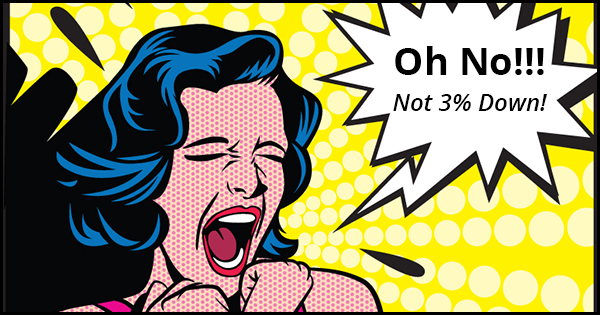Ron's Blog
The Importance of Using a Professional When Selling Your Home
The Importance of Using a Professional When Selling Your Home

When a homeowner decides to sell their house, they obviously want the best possible price with the least amount of hassles. However, for the vast majority of sellers, the most important result is to actually get the home sold.
In order to accomplish all three goals, a seller should realize the importance of using a real estate professional. We realize that technology has changed the purchaser’s behavior during the home buying process. For the past two years, 92% of all buyers have used the internet in their home search according to the National Association of Realtors’ 2014 Profile of Home Buyers & Sellers.
However, the report also revealed that for the second year in a row 96% percent of buyers that used the internet when searching for a home purchased their home through either a real estate agent/broker or from a builder or builder’s agent. Only 2% purchased their home directly from a seller whom the buyer didn’t know.
Buyers search for a home online but then depend on an agent to find the actual home they will buy (53%) or negotiate the terms of the sale & price (31%) or understand the process (63%).
Stephen Phillips, the Chief Operating Officer for HSF Affiliates LLC, put it best:
“Home buyers are more informed than ever with their Internet searches and ongoing research; however, there’s a critical need to transform that information into analysis and advice that helps consumers make the best home-buying and selling decisions.”
The plethora of information now available has resulted in an increase in the percentage of buyers that reach out to real estate professionals to “connect the dots”. This is obvious as the percentage of overall buyers who used an agent to buy their home has steadily increased from 69% in 2001.
Bottom Line
If you are thinking of selling your home, don’t underestimate the role a real estate professional can play in the process.
Where Are Prices Headed Over the Next 5 Years?
Where Are Prices Headed Over the Next 5 Years?

Today, many real estate conversations center on housing prices and where they may be headed. That is why we like the Home Price Expectation Survey.
Every quarter, Pulsenomics surveys a nationwide panel of over one hundred economists, real estate experts and investment & market strategists about where prices are headed over the next five years. They then average the projections of all 100+ experts into a single number.
The results of their latest survey
- Home values will appreciate by 4.8% in 2014.
- The cumulative appreciation will be 23.5% by 2019.
- That means the average annual appreciation will be 3.6% over the next 5 years.
- Even the experts making up the most bearish quartile of the survey still are projecting a cumulative appreciation of 15.1% by 2019.
Individual opinions make headlines. We believe the survey is a fairer depiction of future values.
Historic Mortgage Rates by Decade [INFOGRAPHIC]
Fear of Low Down Payments Mostly Unwarranted
Fear of Low Down Payments Mostly Unwarranted

After it was announced that Fannie Mae and Freddie Mac would again make available mortgage loans requiring as little as a 3% down payment, many people showed concern. Were we going back to the lower qualifying standards of a decade ago that caused the housing market crash? Won’t lower down payments dramatically increase the default rates? Will we again be faced with an avalanche of short sales and foreclosures?
The simple answer is - NO. Let’s look at the data.
While it was happening (2011)
Back in 2011, as we were just recovering from the worst of the Great Depression, many organizations were looking for the cause of the massive default rate on mortgages.
The National Association of Realtors (NAR), the Center for Responsible Lending (CRL), the Mortgage Bankers Association (MBA), the National Association of Home Builders (NAHB), the Community Banking Mortgage Project and the Mortgage Insurance Companies of America (MICA) issued a white paper on the subject titled: Proposed QRM Harms Creditworthy Borrowers and Housing Recovery.
Let's look what the report says:
“In the midst of a very fragile housing recovery, the government is throwing a devastating, unnecessary and very expensive wrench into the American dream. First time homebuyers will have to choose between higher rates today or a 9-14 year delay while they save up the necessary down payment…
High down payment and equity requirements will not have a meaningful impact on default rates. But they will require millions of consumers, who are at low risk of default, to either put off buying a home or pay unnecessarily high rates. The government is penalizing responsible consumers, making homeownership more expensive or simply out of reach for millions. We urge regulators to develop a final rule that encourages good lending and borrowing without punishing credit-worthy consumers.”
The report actually studied the impact a higher down payment would have had on the default rates of loans written from 2002 through 2008. The report states:
“…moving from a 5 percent to a 10 percent down payment on loans that already meet strong underwriting and product standards reduces the default experience by an average of only two- or three-tenths of one percent... Increasing the minimum down payment even further to 20 percent… (creates) small improvement in default performance of about eight-tenths of one percent on average.”
Today (2014)
Just last week, the Urban Institute reveled data showing what impact substantially lower down payments would have on default rates in today’s mortgage environment. Their study revealed:
“Of loans that originated in 2011 with a down payment between 3-5 percent, only 0.4 percent of borrowers have defaulted. For loans with slightly larger down payments—between 5-10 percent—the default rate was exactly the same. The story is similar for loans made in 2012, with 0.2 percent in the 3-5 percent down-payment group defaulting, versus 0.1 percent of loans in the 5-10 percent down-payment group.”
Bottom Line
We believe that the Institute concluded their report perfectly:
“Those who have criticized low-down payment lending as excessively risky should know that if the past is a guide, only a narrow group of borrowers will receive these loans, and the overall impact on default rates is likely to be negligible. This low down payment lending was never more than 3.5 percent of the Fannie Mae book of business, and in recent years, had been even less. If executed carefully, this constitutes a small step forward in opening the credit box—one that safely, but only incrementally, expands the pool of who can qualify for a mortgage.”
©2020 Ron Randolph. All Rights Reserved. Website by Tetrasys

![A Snapshot of Mortgages [INFOGRAPHIC] | Simplifying The Market](http://www.simplifyingthemarket.com/wp-content/uploads/2014/11/A-Snapshot-of-Mortgages-STM.jpg)
![Historic Mortgage Rates by Decade [INFOGRAPHIC] | Simplifying The Market](http://www.simplifyingthemarket.com/wp-content/uploads/2014/11/Mortgage-Rates-by-Decade-1114.jpg)
